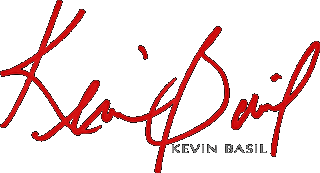Re: Chant vs. non-chant
Warning: Undefined property: linknotes::$are_links in /var/www/vhosts/basil/kbsite/blog/wp-content/plugins/linknotes.php on line 73
This is what I love about blogging. Other people link to me, and then a great conversation happens. Huw (Raphael), aka arkouda, linked to my earlier article on chant. This spawned some comments by his readers which take issue with my statement that “…chant focuses on the text, and it puts the melody at the service of the text. Western music since Bach puts the emphasis on the music itself, to the extent that words are made to fit melodies.” One reader responds:
Consider “Every valley” from Messiah where the melody sung by the tenor mimics the peaks and valleys made low by the arrival of the Messiah. Or “We all like sheep have gone astray,” where the straying herd is represented by a melody that wanders around just like lost sheep? Or how about the Crucifixus Melody in Bach’s B Minor Mass , where the actual melody makes a sign of the cross in the music manuscript? Or in Handel’s Joshua, where the Sun comes to a complete stop in the sky while Israel battles: musically represented by the orchestra with the strings holding a single note…. In fact, Handel’s knowledge of scripture was so good, he dashed off a terse reply to the Bishop of London who had sent him texts for the coronation anthems for King George II.
This is an excellent response, and one for which I am not unprepared. Indeed, this style of composition, called text-painting by musicologists, is exactly what I’m talking about. Take “All we like sheep,” for example. It is, in fact, one of my favorite pieces in the whole beautiful Western tradition of music. The contrast of the light, flighty melody that mimics the wandering nature of sheep with the grave, dolorous setting of “…and the Lord hath laid on Him the iniquity of us all,” almost brings me to tears every time I hear it. And it illustrates exactly what I am saying. The music, though it derives its meaning from the text, is still more important. Try saying “All we like sheep” as many times as it is repeated in that setting. People do not talk like that. It is beautiful music, but you could not say it like that.
The Harvard Concise Dictionary of Music defines chant this way:
general term for liturgical music similar to plainsong, i.e., monophonic and in free rhythm. In particular, the term applies to the liturgical music of the Christian churches, which falls into two main divisions, Eastern chant and Western chant. to the former belong Armenian, Byzantine, Coptic and Syrian chant; to the latter Ambrosian, Gallican, Mozarabic, Gregorian, and Old Roman chant.
It is interesting to note a few things here:
- the academic definition of chant restricts it exclusively to monophonic music. In my experience, however, very little chant that is actually used in a liturgical setting is actually so. Much of it is homophonic, and some of it is polyphonic. This is why, for practical reasons, I tend to include Palestrina, Tallis and others of the Renaissance period in my definition of chant.
- The melodic embellishments which characterize much serious sacred music since the Baroque and Classical periods are foreign to chant. The most that chant will do is embellish a single word, such as “save” or “mercy.”
- choral chant grew out of solo monophony. The people would respond with a refrain (an “antiphon” in the West, a “troparion” or “sticheron” in the East) which mimicked the chanter’s melody.
But, I do want to be very clear on something. When I speak of music being more important than the text, text-painting is very definitely included. When I speak of the text being made to fit the melody, most serious sacred music is obviously excluded. In this case I am talking about the hymn. In a Western hymn, the meter of the music determines the meter of the words, and the words are specifically written to fit the meter.
Plus, it is certainly not true that the distinction between chant and non-chant is one of East versus West. Not at all. The Roman tradition continued to use various forms of chant, primarily Gregorian chant, for centuries. It was not until the Second Vatican Council that the interest in chant declined severely. The Anglican churches also had a vibrant tradition of chant. In the last half of the Twentieth century, there was a revival of interest in chant which went hand in hand with the Liturgical Movement. The most notable in this revival of chant was the work of the Taize community.
Eventually, American Orthodoxy will do what the Russian Church did at the dawn of Russian Orthodoxy. It will give birth to a distinctively American form of chant. This will happen organically, though. It will not be manufactured by people who do not like or understand the other, established chant systems. And it will be chant, not Wesleyan hymn-sings.
